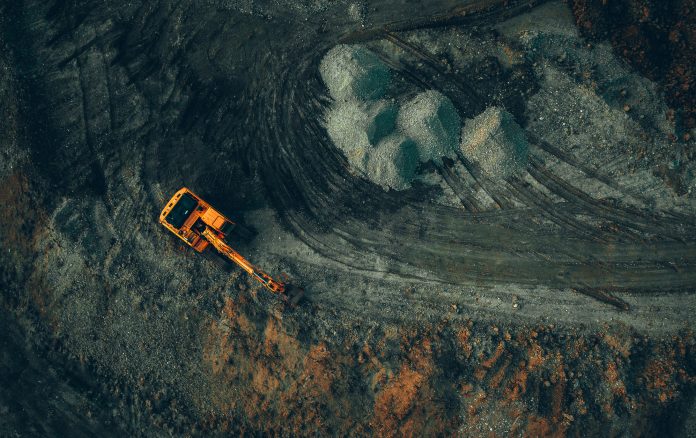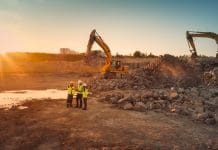The Construction Leadership Council’s CO2nstruct Zero programme has launched the Zero Diesel Sites Route Map, which sets out a plan to eliminate diesel use on 78% of UK construction sites by 2035
If you asked the average person in the street to think about infrastructure construction, the chances are that the picture in their mind would be of a big site with various items of yellow plant shifting muck and digging the ground.
This image of the industry is not unreasonable. Across the UK, there are some 300,000 items of plant being put to work upgrading and maintaining the UK’s infrastructure networks, as well as for us in the wider building and housing sector.
Plant will play a huge role in delivering our low-carbon ambitions, as an essential tool to build renewable energy generation, transmission and distribution, along with low-carbon transportation networks.
Yet there is also a very obvious carbon downside to all this plant use. The very lifeblood of most non-road mobile machinery is diesel, a hydrocarbon fuel that plays an undeniable role in climate change.
If the UK construction sector is to deliver on its ambition to achieve net zero carbon by 2050 then diesel has to go.
But this is not a switch that can be flicked overnight. Like it or not, diesel offers the energy density required to power items of plant for which there are currently few alternatives. Companies from across the sector also report uncertainty about how they can transition away from diesel, even where alternatives do exist.
Reducing diesel use on construction sites by 78%
This is where the Construction Leadership Council comes in.
Living up to its name, in 2021 it established CO2nstruct Zero a programme to provide leadership for the sector to drive carbon out of its activities and processes.
It sees reducing diesel use on construction sites as a big part of its strategy.
In 2022, it commissioned the production of a route map to set the direction for diesel to be eliminated from 78% of sites by 2035.
The plan was put together by a cross-industry panel of experts. Following a sector-wide consultation later that year, the final plan was launched by Nusrat Ghani MP, minister of state at the Department for Business & Trade, minister of state for the Investment Security Unit and minister for industry and economic security, in June.
What does the CO2nstruct Zero programme involve?
The plan focuses on five key themes:
-
Measuring diesel use on construction sites
Central to driving down diesel use on construction sites is the understanding of how much is already being consumed. The Zero Diesel Sites team will confirm each year what the levels of diesel use were for the previous year, providing baseline data and regular updates on progress.
-
Improving efficiency: using best practice
Even before the widescale adoption of plant that uses fuel other than diesel, there are opportunities to cut the amount of diesel used by existing plant. This is through better training of plant operatives and the use of technologies that can track and cut fuel use.
The Zero Diesel Sites team are putting in place appropriate training and guidance on issues such as telemetry to help businesses from across the construction sector to cut their diesel use. They are also proposing an annual competition where sites vie to show how much they have cut their diesel by.
-
Transition to cleaner fuels
There are a range of alternatives to diesel that can be used to power plant. Hydrogen is one of the lead contenders. The Route Map therefore calls for more work to support the wider rollout of hydrogen, including guidance on new technology and promotion of those adopting hydrogen power.
It also seeks to tackle any policy barriers to hydrogen use on sites. Other fuels such as biofuels, GTL and LPG will also be monitored to confirm whether they can also play a role in cutting diesel use on construction sites while not causing their own carbon emissions or wider sustainability impacts.
-
Transition to electric
Electricity is another great option to provide power for plant, whether through supply from the grid or battery power. There remain significant obstacles that currently prevent wide adoption of electricity on sites as a power source and the Route Map seeks to identify and eliminate these challenges.
-
Wider industry support
Finally, the Zero Diesel team are preparing simple guides so any company can prepare their own diesel elimination strategy. They will also be working with the UK government, as well as key industry clients, to ensure that the change needed is backed by policymakers and the industry’s customers.
Further details of the Zero Diesel Sites Route Map can be found on the Construction Leadership Council’s website at www.constructionleadershipcouncil.co.uk
Construction Leadership Council
construction.enquiries@beis.gov.uk
www.constructionleadershipcouncil.co.uk

















